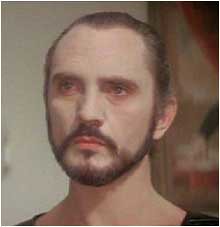Jeez, Gari, Some More Underinformed Financial Analysis? Why Thank You!
Thanks, Felix, though it turns out I'm not done yet. I finished last night's far-from-polished rant, headed home to the bosom of my family, and was suddenly afflicted with a bout of insomnia that only a ninth-inning Mets choke would allay.
While watching Pedro Martinez morph into 2008's Mo Vaughn, I came across this post at Calculated Risk that suggested I take a look at this story at Fortune.
The article isn't in very good shape, riven with jargon, repeated phrases and hackneyed expressions ("That bummed out investors who bought the common..."). Since the article now indicates it has been updated, it's possible it's been looked at by a grown-up since last night (Update: No it hasn't). I think the attraction of the article to the CR clientele is its rather ghoulish focus on the post-apocalyptic debris from a Lehman Brothers real estate deal gone bad. (CR's commenters are not quite James Howard Kunstler, about whom more hopefully in a later post, but they get close.)
But I'm really not going to spend another couple of hundred words hating on more famous journalists. Instead, the article's authors give me a chance to explore one of the memes that's going to get more airing as we all digest the credit crunch and its implications. I'll call it the Noble Trader Myth. Fortune's Boyd is a former bond-slinger, and so he's likely to be close to these kinds of sources.
Traders are enormous amounts of fun, combining rapid wit, frequently enormous appetites for food and drink, and often an endearing lack of discretion. They're also incredibly adept at manipulating a narrative. What we'll see in the coming months is a concerted attempt, aided by some of financial journalism's finest, to hail the traders for their foresight during the parade of foolishness leading up to the crisis.
We're going to hear them described as canaries in the coal mine, flinty-eyed realists at odds with the make-believe coming from management. They'll dominate the accounts, much as the mortgage traders (warts and all, I'll grant you) dominated the wonderful Liar's Poker. I recall how often Vince Kaminski cropped up in the Enron post mortems, explaining how his team of analysts (formed, you should remember, to support Enron's trading book) tried to flag up problems at Enron.
Whenever you read these paeans to the cold-eyed realists, remember this one thing: the trading floor is the beast that must be fed. Assets, capital, doesn't matter. The firm's money, other people's money, doesn't matter. Remember FIASCO, still Frank Partnoy's only compelling writing on finance, where the Morgan Stanley trading desk sucked in ever more ludicrous products. Remember Lehman Brothers and Merrill Lynch buying mortgage originators, desperate to find some mortgages to stuff into the maw of the trading floors.
A lot of financial products that could have found a home in the accounts of pension funds, life companies and other private investors were often spun a few times through the various interest rate, credit default, maybe even foreign exchange swap desks even while sitting on the books of the banks that originated them, supposedly hedged out so many myriad times that what was left was essentially inert, risk-free, maybe even cash-like.
Traders are not your friend. Traders are sometimes not even their own friends. Traders are ineradicable. Traders can sometimes be tamed, their energies diverted through cross-subsidies without them getting up and leaving en masse. Goldman Sachs' magic has not been its willingness to countenance trading, but its willingness to muzzle its traders at the slightest sign of trouble.
The above might strike you as a tad melodramatic. If so, I'll gladly blame the pulled pork and summer ale-fest I just departed. But if the financial services end up carrying the can for this mess, we'll have learned nothing from this sorry period. Have a lovely Fourth.




0 Comments:
Post a Comment
<< Home